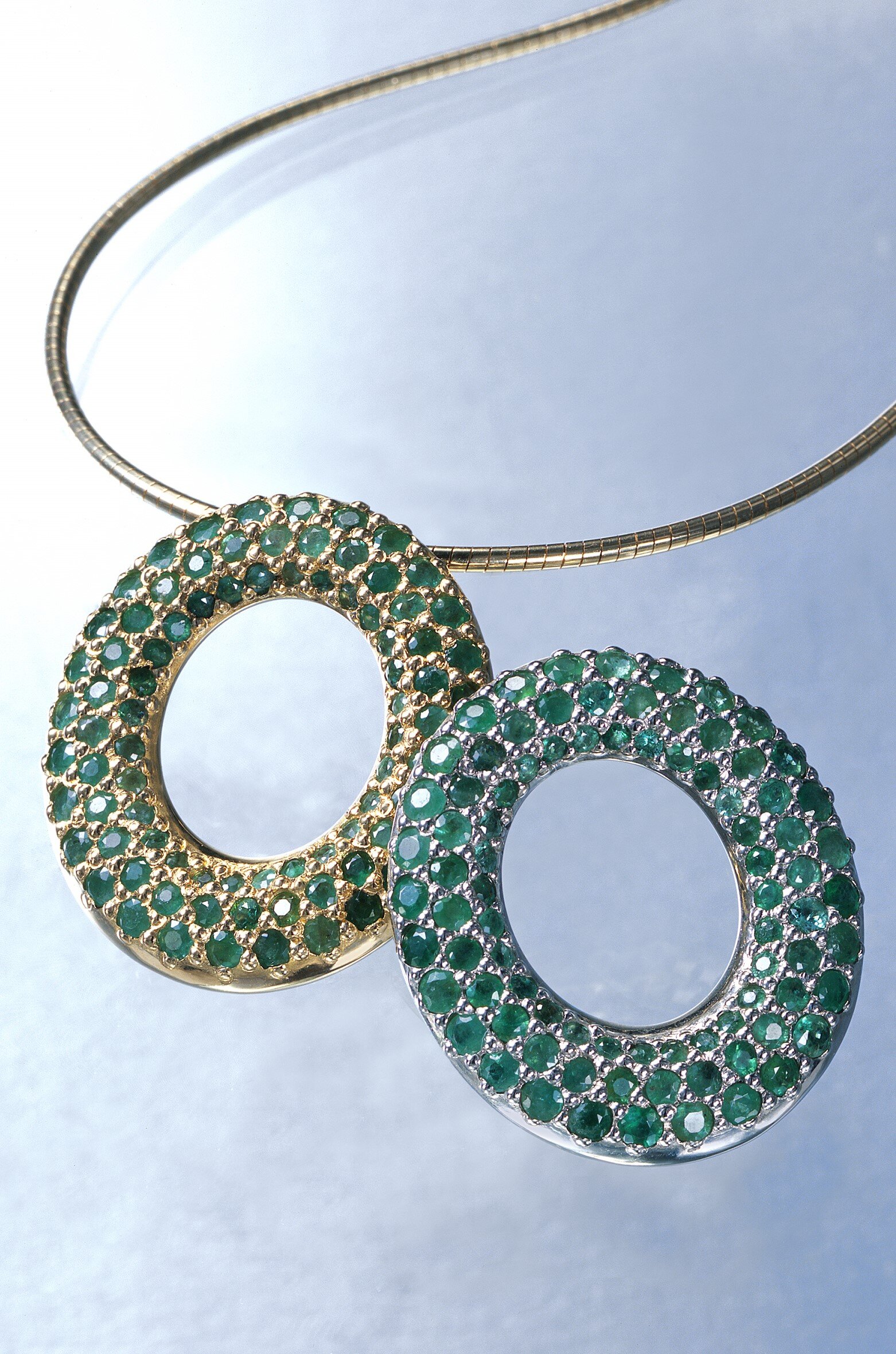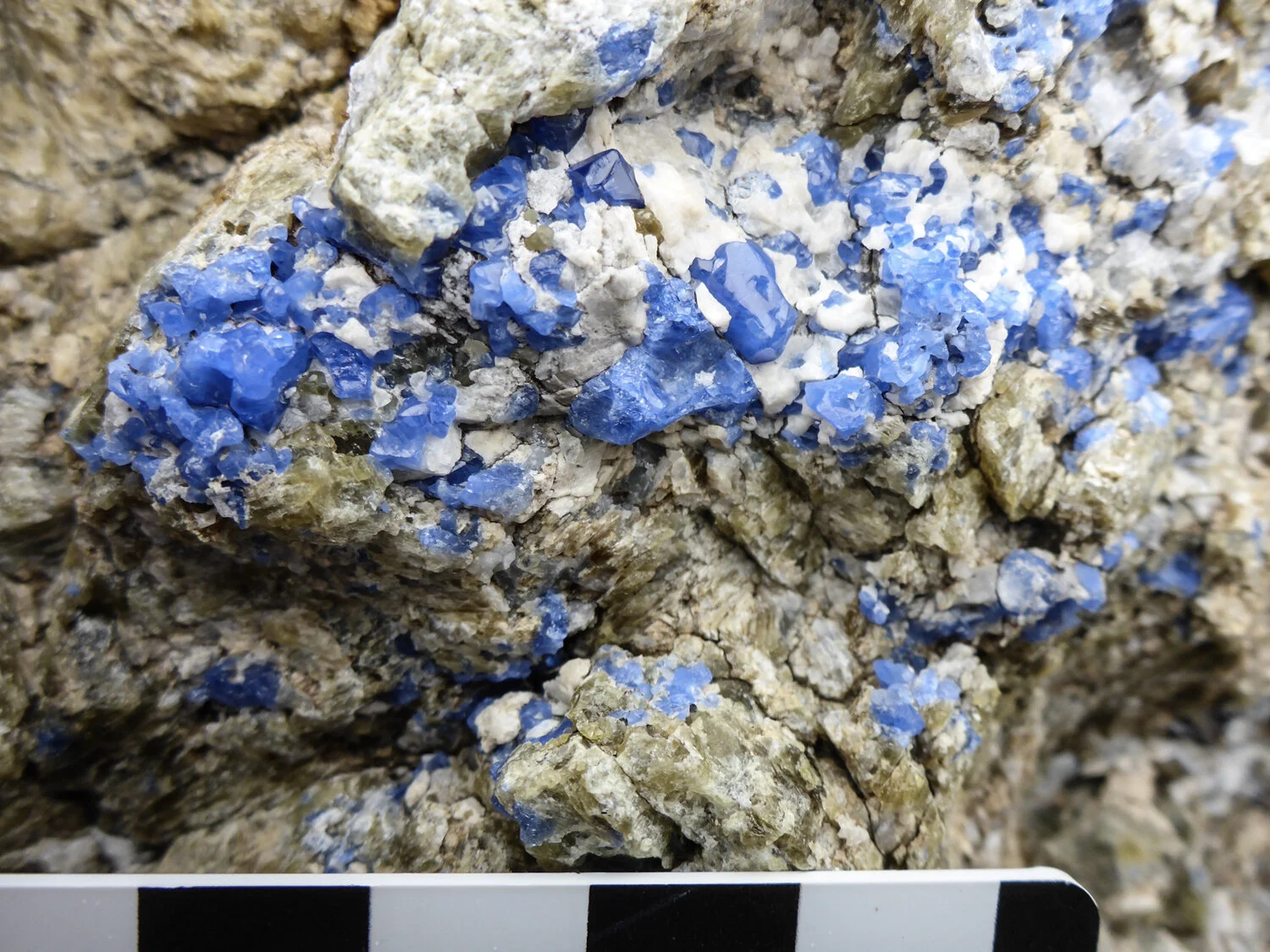Lee Groat on How Gemstones Form
Lee Groat is a Professor in the Department of Earth, Ocean, and Atmospheric Sciences at the University of British Columbia. He studies the mineralogy of gemstones and also works in the field, having conducted surveys of parts of northern Canada looking for emeralds. Here he is doing fieldwork at a giant molybdenum and tungsten deposit on the British Columbia/Yukon border.
Courtesy of Allison Brand
Listen to the podcast here or wherever you listen to podcasts.
Scroll down for illustrations that support the podcast. And add your comments at the bottom of the page.
Note - playing the podcast is not supported on Internet Explorer; please use any other browser, or listen on Spotify, Apple Podcasts, etc.
Podcast Illustrations
Emeralds
Emeralds in a quartz vein with at the Tsa da Glisza occurrence in the Yukon Territory. The image is approximately 4 cm across.
Courtesy of Lee Groat
Faceted emeralds about 3mm in length from the Tsa da Glisza occurrence.
Courtesy of Bradley S.
Wilson
Melee-size (2.5-3.5 mm) emeralds set in gold and silver.
Courtesy of True North Gems, Inc.
Emerald in a pegmatite from northern Ontario.
Courtesy of Lee Groat
The vivid blue spinels on Baffin Island that are the most impressive gems Lee Groat has seen in the field. The chromophore responsible for their color was probably already present in the sediments before they were metamorphosed into these gem-bearing rocks. The gems occur with white carbonate in a calc-silicate rock composed of the green amphibole pargasite.
Belley & Groat, 2019
The Beluga Sapphire Occurrence on Baffin Island
Lee Groat wielding a diamond saw at the Beluga sapphire outcrop at Kimmirut on Baffin Island. The brooch presented to Queen Elizabeth II on the occasion of her Sapphire Jubilee included sapphires from this occurrence.
Courtesy of Allison Brand
The dark parts are diopside plus phlogopite plus feldspar, and the light parts are calcite, scapolite, and nepheline. The sapphires occur in the white material.
Sapphires in situ in a calc-silicate rock at the Beluga occurrence.
Courtesy of True North Gems, Inc.
Colorless, blue, and yellow sapphires from Kimmirut on Baffin Island where the Beluga sapphires were found.
Courtesy of True North Gems, Inc.
Brooch presented by the Canadian Governor-General to Queen Elizabeth II on the occasion of her Sapphire Jubilee. The brooch contains 48 pale blue sapphires from the Beluga occurrence on Baffin Island together with more than 400 Canadian diamonds.
Brooch Image courtesy of Hillberg & Berk
Gems can form at plate boundaries where an oceanic plate subducts below a continental plate (A) or two continental plates collide (B).
Stern et al. 2013
References
Belley & Groat, The Canadian Mineralogist, 57, 147-200 (2019)
Stern et al., Geology 41(7):723-726 (2013)












